13.01.2024

v. l. n. r. Gerald Carr, Edward Gibson, William Pogue
In space since their launch on Nov. 16, 1973, Skylab 4 astronauts Gerald P. Carr, Edward G. Gibson, and William R. Pogue began the new year of 1974 roughly halfway through their planned 84-day mission. By the end of January, the three rookies held the records for the longest single space flight and the most cumulative time spent in space. Mission managers monitored the station’s and the astronauts’ health and weekly concurred with extending the mission to its full duration as the astronauts accomplished a record number of science observations of the Sun, the Earth, Comet Kohoutek, and themselves. Carr and Gibson completed the final Skylab spacewalk to bring inside external science experiments and the last film cassettes for return to Earth. They began preparations for their own return to Earth.


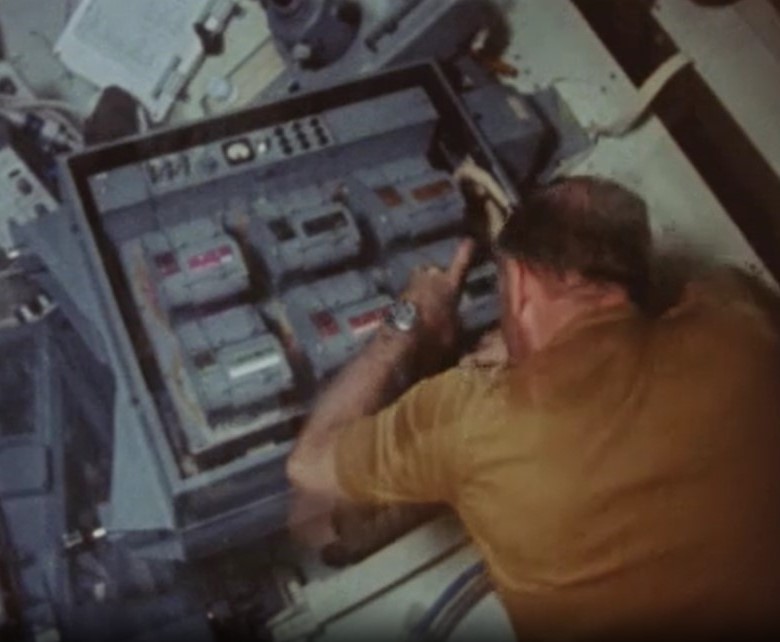
Left: Image of the Sun’s corona taken by the Apollo Telescope Mount spectroheliometer instrument. Middle: Skylab 4 astronaut Edward G. Gibson’s sketch of Comet Kohoutek, based on his observations. Right: Gerald P. Carr adjusts the Multispectral Photographic Camera System, part of the Earth Resources Experiment Package.
Following the Dec. 30 exchange of information and ideas during the space-to-ground conference regarding the crew’s scheduling, the astronauts felt that the second six weeks of their mission transpired much more smoothly than the first six. They accomplished all their tasks and even more, and no longer felt rushed or like they made mistakes. Taking some time out on their off-duty days, they enjoyed weightlessness in their spacious home. On Jan. 1, 1974, Carr, Gibson, and Pogue celebrated the coming of the new year, the first crew to observe that holiday in space along with Thanksgiving and Christmas. No American astronaut would repeat that for 23 years, until John E. Blaha‘s four-month stay aboard the Mir space station in 1996-7. On Jan. 10, Carr, Gibson, and Pogue enjoyed a day off from their regular science and maintenance tasks, with planners scheduling only one third of their time, freeing them to pursue their own activities. On the ground, mission managers held the 56-day review of the mission and based on the crew’s health, the station’s condition, and the amount of consumables, declared the mission go for 84 days, although strictly speaking, managers and flight surgeons approved the mission’s extension one week at a time.



A little levity in weightlessness. Left: Skylab 4 astronaut Gerald P. Carr conducts an “Upper Body Negative Pressure” test on one of his fellow crew members. Middle: Edward G. Gibson performs an in-depth inspection of his spacesuit. Right: Carr demonstrates his strength in weightlessness by “supporting” William R. Pogue on one finger.
During January, Carr, Gibson, and Pogue surpassed all previous human spaceflight endurance records. On Jan. 4, they surpassed Charles “Pete” Conrad’s 49-day mark for cumulative time in space – what took Conrad four missions to accumulate, the Skylab 4 trio accomplished in just one. Chief astronaut Donald K. Slayton congratulated them, saying “As far as we’re concerned down here, you’re doing an outstanding job all the way. Just keep up the good work.” On Jan. 14, they surpassed the Skylab 3 crew’s 59-day mark for the longest single spaceflight, and 11 days later passed Alan L. Bean’s record of 69 days for cumulative time that he had accrued over his two missions. NASA Administrator James C. Fletcher and Deputy Administrator George M. Lowsent congratulatory messages to the astronauts for breaking the old records and “especially for the outstanding work you have done and are continuing to do in the field of space science, space applications, and in learning about man’s reaction to space.” After receiving the congratulations, Carr told capsule communicator (capcom) Richard H. Truly that records are made to be broken and sooner or later someone would break theirs. Indeed, four years later Soviet cosmonauts Yuri V. Romanenko and Georgi M. Grechko did so, completing a 96-day mission aboard Salyut-6.

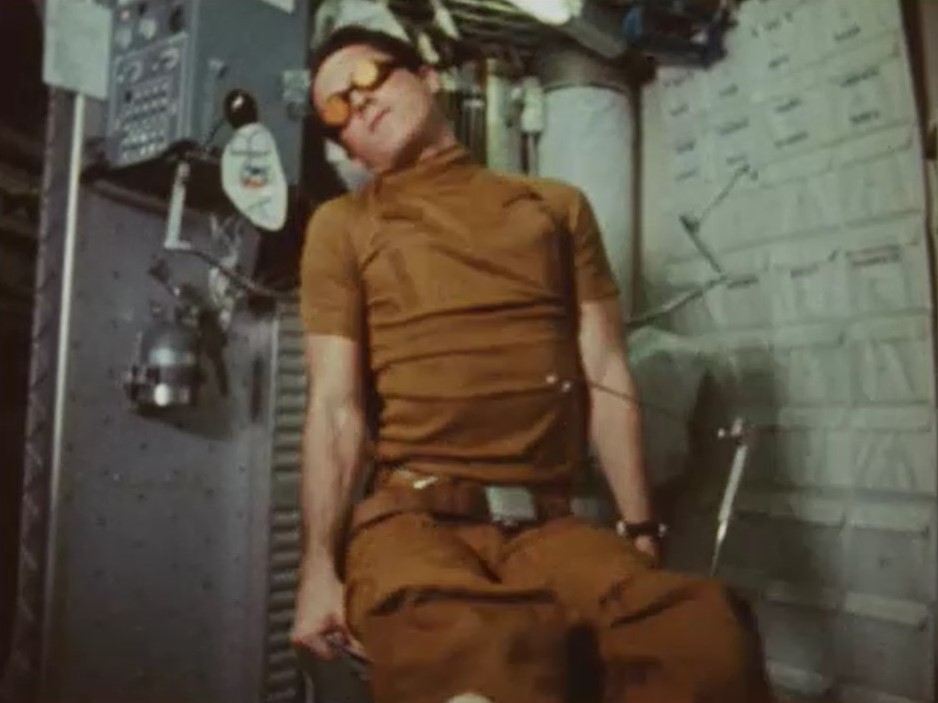
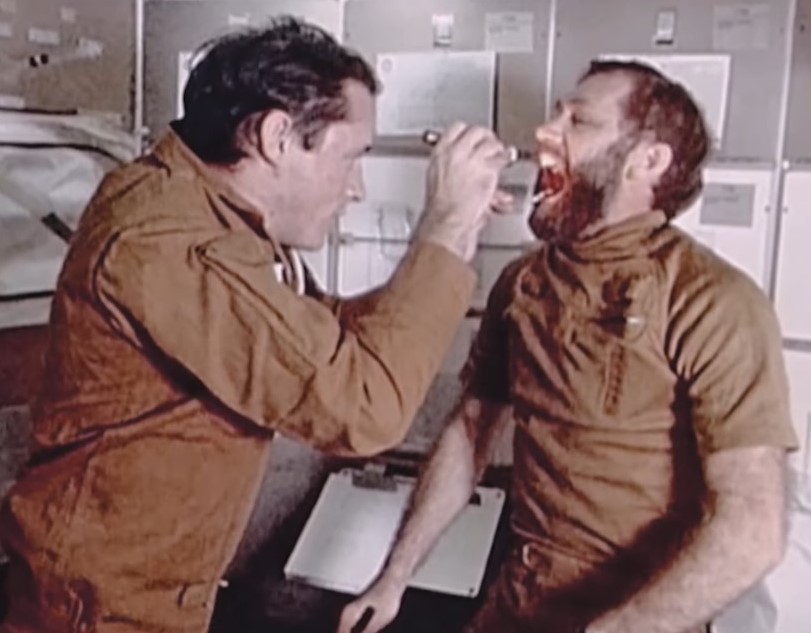
Left: Gerald P. Carr exercises on the Thornton treadmill. Middle: Edward G. Gibson performs a session on the rotating chair to test his vestibular system’s response to weightlessness. Right: Gibson, left, performs an oral exam on William R. Pogue.


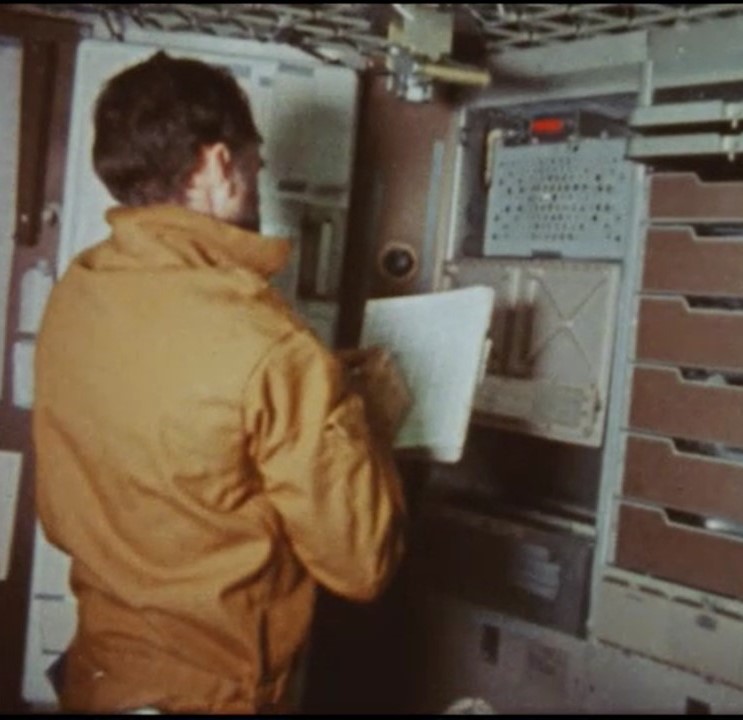
Left: Gerald P. Carr, left, monitors Edward G. Gibson during a Lower Body Negative Pressure test of his cardiovascular system. Middle: Gibson, right, prepares to draw a blood sample from Carr for a medical experiment. Right: William R. Pogue works with the Small Mass Measurement Device.
As they entered the record-breaking third and final month of their mission, Carr, Gibson, and Pogue continued to adhere to the strict regimen of 1.5 hours of daily exercise using a bicycle ergometer and the Thornton treadmill. They continued the comprehensive biomedical investigations to evaluate the effects of long-duration space flight on the human body. Using the eight instruments mounted in the Apollo Telescope Mount (ATM), Carr, Gibson, and Pogue continued their observations of the Sun. On Jan. 21, thanks to his dedicated vigilance at the ATM instrument panel, for the first time ever Gibson observed a solar flare from its inception until its expiration. His observations added greatly to astrophysicists’ understanding of solar flares. In a break with the tradition of having only the capcom speak to the astronauts in orbit, the Skylab 4 crew held several space-to-ground conferences with some of the scientists associated with various experiments. Beginning with the televised conference on Dec. 28 with astronomer Luboš Kohoutek, discoverer of the comet that bears his name, they held conferences with several of the ATM investigators, usually on the crew’s off duty days.
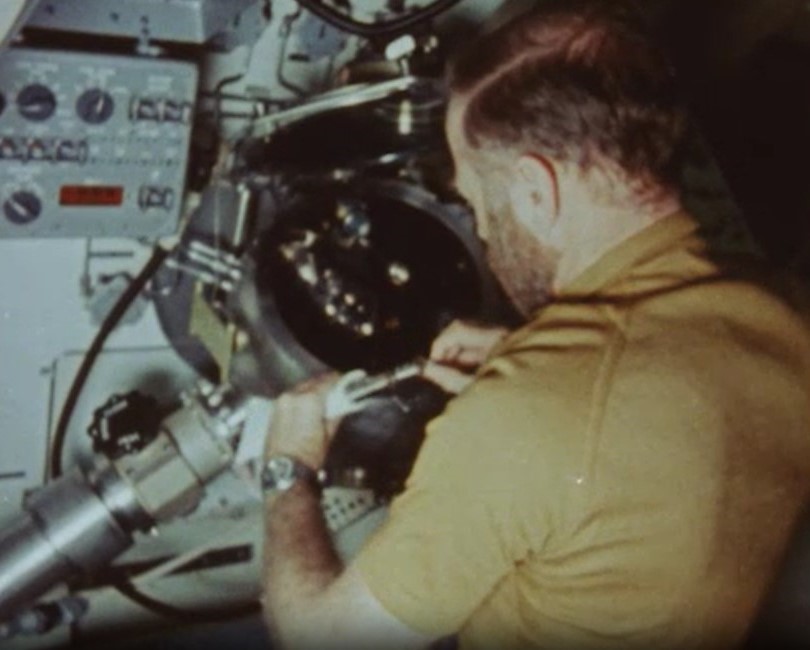


Left: Gerald P. Carr changes samples in the Materials Processing Facility. Middle: Edward G. Gibson, left, William R. Pogue, and Carr enjoy a meal together. Right: Gibson prepares to take his weekly shower.
The astronauts continued to observe Comet Kohoutek through January. Because the ATM instruments could no longer see the comet as it moved away from the Sun, they used binoculars for observations, and Gibson drew detailed sketches of the comet as its tail changed shape. Carr and Pogue completed the tests of the Astronaut Maneuvering Unit, a precursor of the Manned Maneuvering Unit used during the space shuttle program to retrieve satellites, “flying” it inside the large dome of the workshop. On Jan. 23, Pogue celebrated his 44th birthday, only the third person to celebrate a birthday in space. That same day, the three major television networks announced they would not be broadcasting live television of the Skylab 4 splashdown, the first time since live TV coverage began with the Gemini VI splashdown in December 1965. They felt the event not newsworthy enough to cover. On Jan. 31, Carr, Gibson, and Pogue held their second and final televised press conference. Capcom Truly read the questions submitted in advance by reporters and the astronauts gave their responses. Although time ran out to ask questions submitted by sixth grade students as part of a class project, the astronauts took time later to answer them.
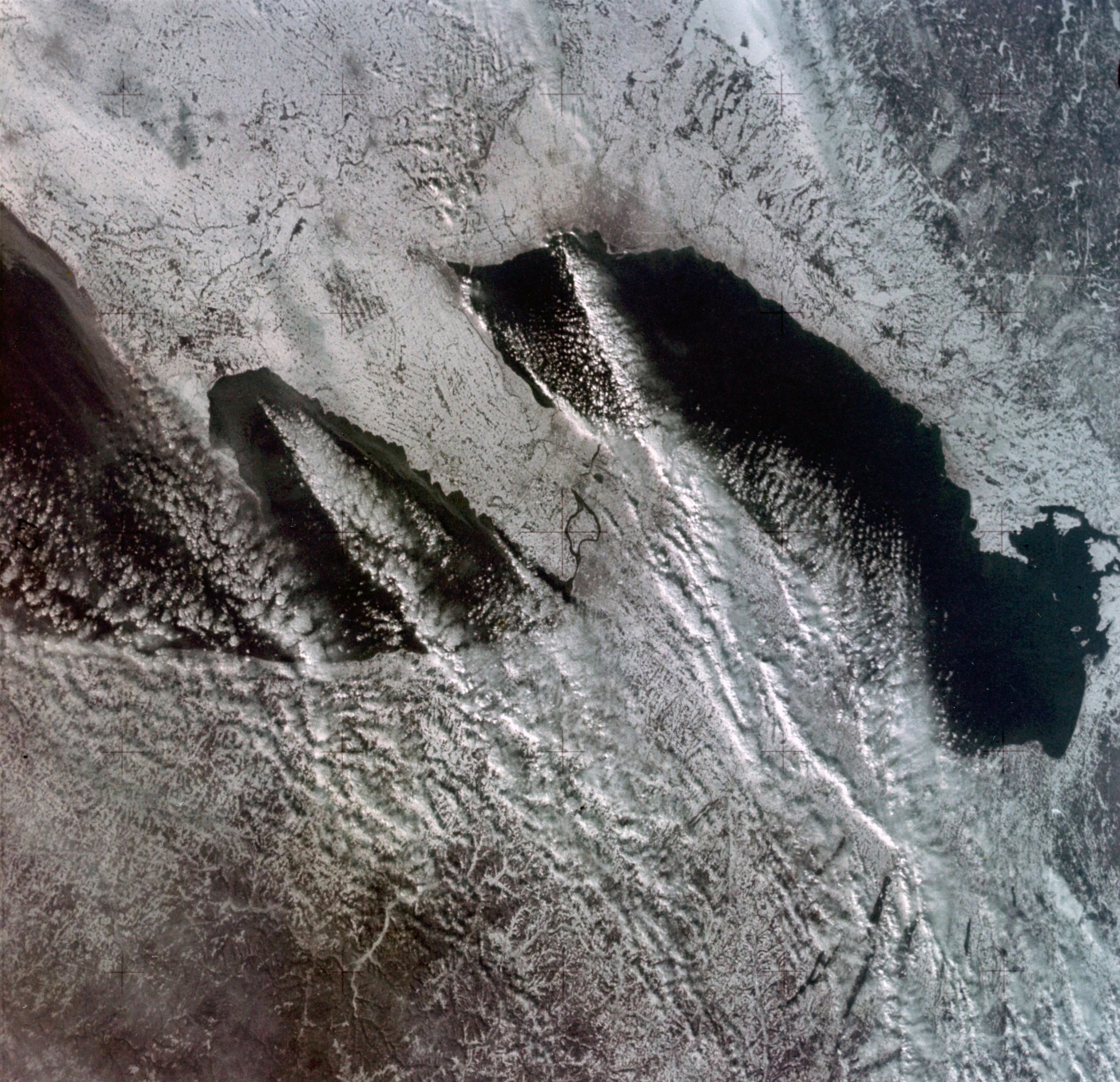
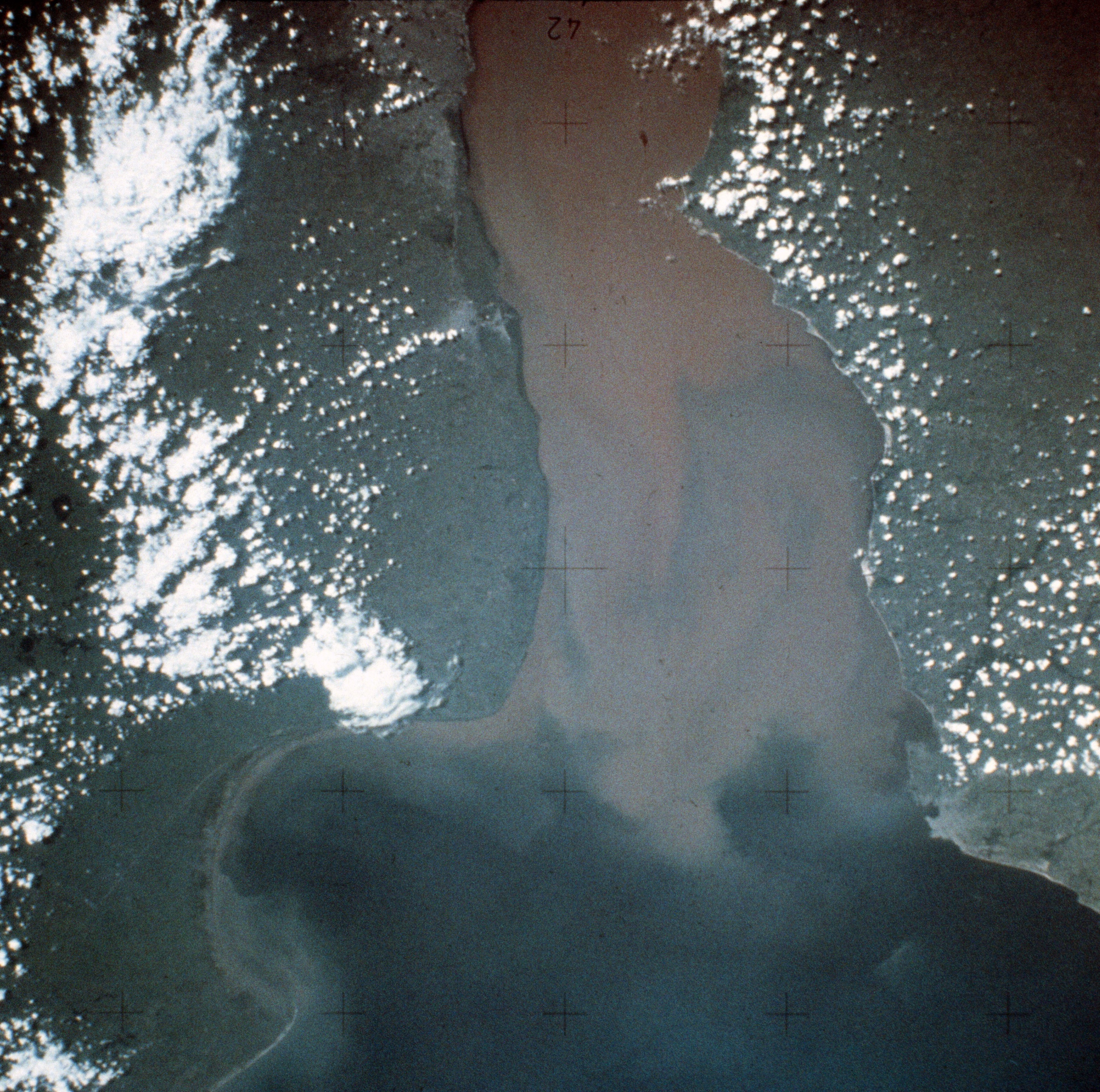


A selection of Skylab 4 astronaut photography of the Earth. Left: Lakes Erie, left, and Ontario. Middle left: The Rio de Plata separates Argentina, left, and Uruguay. Middle right: The Japanese island of Kyushu. Right: New Zealand.
Skylab’s high 50-degree orbital inclination allowed its crews to observe and photograph parts of the Earth not previously seen by astronauts in orbit. They observed pre-selected sites using a suite of six instruments in the Earth Resources Experiment Package and photographed pre-selected sites and targets of opportunity using handheld cameras.


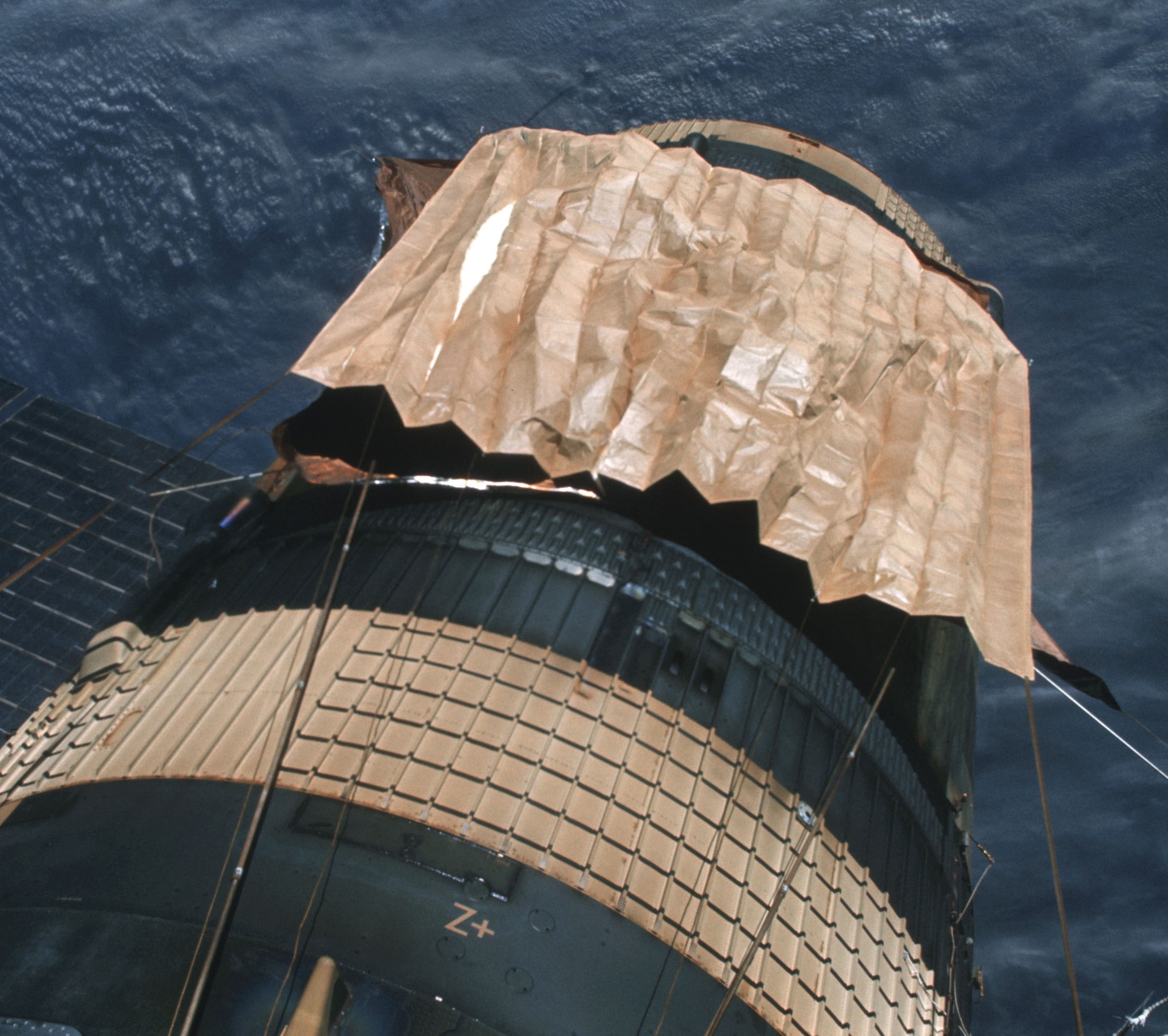

A selection of photographs from the final Skylab spacewalk. Left: Edward G. Gibson near the station’s airlock. Middle left: Gerald P. Carr at the Apollo Telescope Mount to retrieve the last film cassettes. Middle right: The second sunshield deployed by the Skylab 3 crew showing evidence of discoloration. Right: The Apollo Command and Service Module.
On Feb. 3, Carr and Gibson stepped outside their space station for the fourth and final spacewalk of their mission. The primary tasks for the 5-hour, 19-minute excursion involved the retrieval of the final film cassettes from the ATM as well as scientific instruments and samples from the lab’s exterior. During the three Skylab missions, the crews exposed and returned to Earth nearly 30 film cassettes, providing scientists with more than 150,000 photographs. The next American spacewalk would not occur for another nine years, during the STS-6 mission in April 1983. During their stay aboard Skylab, Carr, Gibson, and Pogue accumulated 22 hours 22 minutes of spacewalking time, an Earth orbital single mission record that stood until 1991. After finishing the spacewalk, they turned their attention to preparing for their return to Earth five days later.
For more insight into the Skylab 4 mission, read Carr’s, Gibson’s, and Pogue’s oral histories with the JSC History Office.
Quelle: NASA
